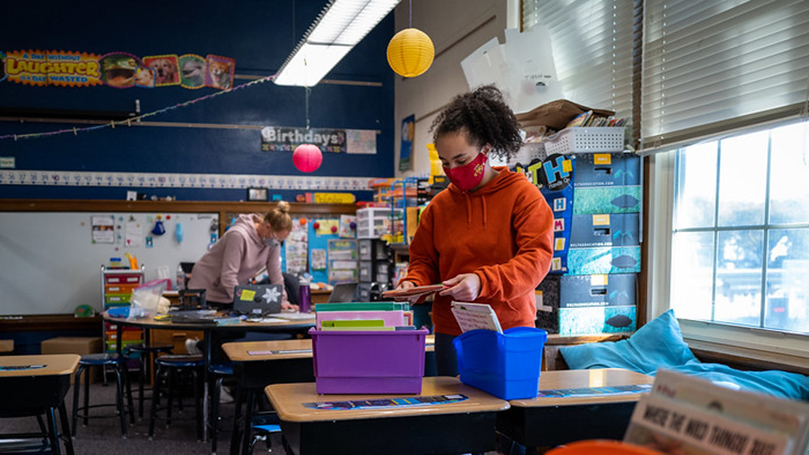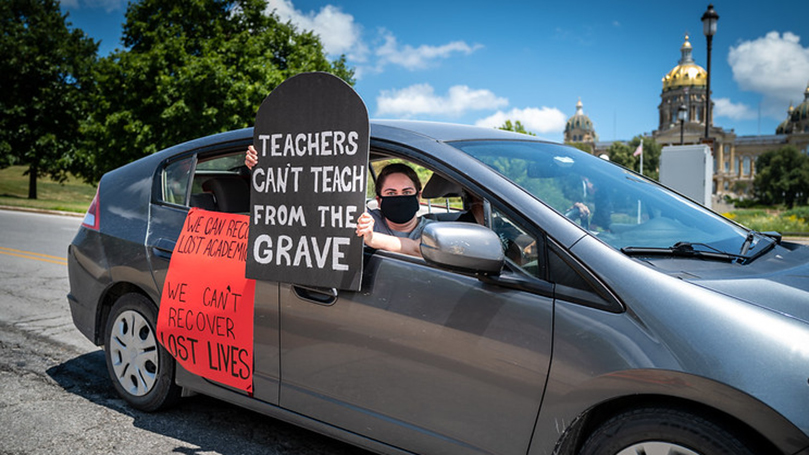
Readers might be excused for getting the impression that parents and teachers are locked in conflict over the issue of sending kids to school during the pandemic. Teacher unions have been charged with “blocking” school reopenings. However, even a quick look reveals that these charges frequently have come from forces who have long sought to undermine public schools in the name of “free markets” and “educational choice,” such as the conservative Cato Institute.
But hearing what the stakeholders actually have to say gives a more layered and more balanced picture. The dominant impression one gets is that school workers and parents (that is, those whose children attend the schools) are well aware of their common concerns, and that these concerns stem from conditions that long predated the current crisis. Granted that this issue is not simple and that it’s more than a rehash of old questions, but it sure looks like the matter of when and how to reopen schools safely is heavily influenced by the challenges that have long roiled public education. And the strongest parent voices, such as “Open Schools California,” have been those calling for specific measures that will make it possible to open schools safely.
Are there disagreements? There are, some strongly felt, but not primarily between parents and school workers. Instead, it could be argued that the differences of opinion are more often between, on the one hand, school administrations and academic sources, who may indeed have sound research to back them up, calling for quick reopening and, on the other hand, teachers and parent organizations who are all too often faced with opening school buildings where the agreed-upon safety conditions have not been met. For instance, the Philadelphia Parents United for Public Education says on their website that they are “disturbed with the [school] district’s insistence that the delay” in opening schools is due to the “mediation” with the “Philadelphia Federation of Teachers.”

One can find powerful testimonials from school workers who have been pressured to return to schools before safety conditions are in place. For example, in Philadelphia scheduled reopenings were postponed twice while the teachers union insisted that an agreed-upon third party arbitrator be given time to complete the necessary investigation. To cite one example, the union’s checklist calls for the school district to provide each staff member with adequate face coverings rather than one mask for the year, as the administration initially offered. Schools there are now being opened a limited number at a time.
Even those authorities urging districts to reopen quickly have emphasized the importance of providing the necessary tools, such as “universal masking and social distancing.” The problem comes when the tools are not provided. As athletes sometimes say, “It’s not in the saying; it’s in the playing!”
And all this comes on top of the challenges faced by most parents everywhere during the pandemic. Having to care for children when schools are closed has forced many “frontline” parents to choose between leaving the kids with an older sibling — sometimes not much older — and quitting the job to stay home. And for teachers, having to teach remotely has proven to be an even greater challenge than providing in-person classroom instruction. So when teachers are reluctant to return to school buildings, it’s not as if they are at home doing nothing. “We are still doing our jobs with our whole hearts,” said one Philadelphia teacher who faced preparing to teach in a room that had not been cleaned or supplied with the proper number of chairs or desks when she returned.
So what are the take-aways for educators from the pandemic? Maybe we can boil them down:
1. Make sure public schools everywhere in the U.S. get the resources and the personnel they need so they can actually make real the recommendations of education researchers.
2. Consider what the priority needs of school districts are. Some districts will continue to face more challenges than others. True, some choices may have to be made: more school police or more school medical personnel and more comprehensive programs?
3. Listen to school employees and parents and help them work together.
Image: Preparing for the classroom, Phil Roeder (CC BY 2.0); Teacher protest, Phil Roeder (CC BY 2.0).


 Join Now
Join Now